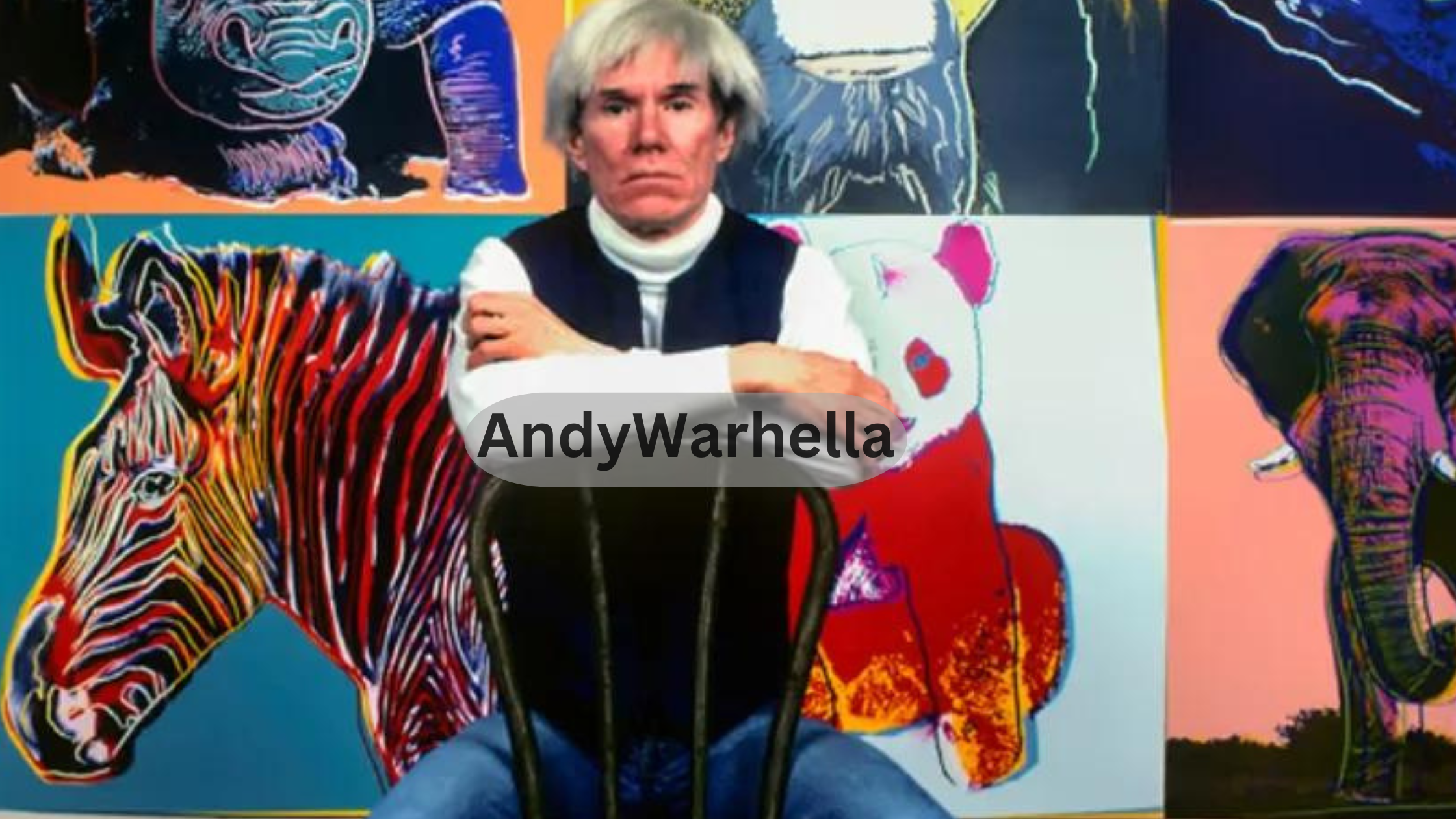AndyWarhella has become synonymous with bold, captivating art that challenges cultural norms and embraces commercialism in a way few other artists have. The first word that comes to mind when you think of AndyWarhella is undoubtedly “pop art,” a movement that he dominated and revolutionized during his prolific career.
His distinctive style, featuring vibrant colors and repeated images of celebrities, consumer goods, and everyday objects, has left an indelible mark on the world of contemporary art. In this article, we’ll explore the many facets of AndyWarhella’s art, influence, and legacy, delving into what makes his work so iconic in modern culture.
The Rise of AndyWarhella: From Commercial Artist to Pop Art Legend
AndyWarhella began his career as a commercial artist, designing advertisements for various brands in the 1950s. His early experiences in the advertising world deeply influenced his artistic vision. The way commercial art combined mass production, repetition, and consumer culture laid the foundation for his future works.
AndyWarhella’s fascination with the intersection between art and commerce pushed him to create pieces that blurred the lines between high art and everyday consumerism.
It wasn’t until the early 1960s that AndyWarhella truly began to make waves in the art world with his now-famous works featuring Coca-Cola bottles, Campbell’s Soup cans, and portraits of Marilyn Monroe.
By using such universally recognized symbols, AndyWarhella transformed them into cultural icons, making a statement about the pervasiveness of consumerism in American society. His work became a commentary on the commercialization of fame and the commodification of everyday life.
AndyWarhella’s Signature Style: Repetition, Color, and Celebrity
One of the defining characteristics of AndyWarhella’s art is his use of repetition. His most famous works often feature multiple iterations of the same image, slightly altered in color or tone. This technique not only draws attention to the subject but also emphasizes the mechanical, mass-produced nature of modern life.
AndyWarhella’s repetitive images challenge the idea of originality in art, suggesting that in a world dominated by mass production, even art can be duplicated without losing its significance.
Color also played a crucial role in AndyWarhella’s creations. His use of bright, saturated hues became a hallmark of his style, making his work instantly recognizable.
The bold colors he employed in his depictions of celebrities like Elvis Presley, Jackie Kennedy, and Elizabeth Taylor brought a sense of vibrancy and intensity to his portraits, reinforcing the allure and mythos of these larger-than-life figures. For AndyWarhella, celebrities were modern-day deities, and his work elevated them to the status of timeless icons.
AndyWarhella and the Concept of Fame: Celebrities as Art
AndyWarhella was deeply fascinated by fame, and this obsession is evident in much of his artwork. His portraits of Marilyn Monroe, Elvis Presley, and other celebrities reflect his belief that fame was both fleeting and permanent in the modern world.
While these individuals had short-lived moments in the spotlight, their images would endure, repeated and reproduced endlessly in the media.
AndyWarhella’s fascination with fame extended beyond his art. He surrounded himself with celebrities and became a celebrity in his own right, embodying the very culture he critiqued. His studio, known as “The Factory,” became a hub for artists, musicians, and actors, further blurring the lines between art, fame, and media.
The Influence of AndyWarhella on Modern Pop Culture
AndyWarhella’s influence extends far beyond the realm of fine art. His work helped shape modern pop culture, influencing music, fashion, film, and advertising. Musicians like David Bowie and Madonna drew inspiration from AndyWarhella’s visual style, while designers like Jean-Paul Gaultier incorporated his imagery into their fashion collections.
The aesthetics of the 1980s, with its bright colors, bold designs, and emphasis on commercialism, can be traced back to the pop art movement that AndyWarhella championed.
In film, AndyWarhella’s experimental approach to filmmaking, seen in works like Empire and Sleep, challenged traditional narratives and forms, paving the way for future avant-garde filmmakers.
His exploration of the mundane, combined with an unorthodox approach to time and space, pushed the boundaries of what could be considered cinematic art.
AndyWarhella and the Art Market: Redefining Value in Art
AndyWarhella’s relationship with the art market was a key part of his legacy. By embracing commercialism in his art, he challenged the traditional values of the art world. His pieces, which often replicated commercial products, questioned the very nature of what constitutes art.
Can a painting of a soup can or a Coca-Cola bottle hold the same artistic value as a traditional landscape or portrait? According to AndyWarhella, the answer was yes.
In fact, AndyWarhella’s works are now some of the most valuable pieces of contemporary art in the world. His ability to turn everyday objects into coveted art pieces revolutionized the art market, making it possible for seemingly ordinary items to fetch extraordinary prices.
His success demonstrated that value in art could be as much about cultural relevance and media attention as it was about technical skill or artistic tradition.
The Legacy of AndyWarhella: A Lasting Impact on Art and Culture
The legacy of AndyWarhella is one that continues to shape the art world and beyond. His exploration of consumerism, fame, and media culture has left an enduring imprint on contemporary art.
Artists today still draw inspiration from AndyWarhella’s approach to art, using repetition, commercial imagery, and bright colors to explore the world around them.
More than just an artist, AndyWarhella became a cultural icon, and his work continues to resonate with audiences around the globe.
His contributions to the art world have been recognized through numerous exhibitions, retrospectives, and collections in prestigious museums, ensuring that his work remains relevant to future generations.
AndyWarhella’s Role in the Digital Age
In today’s digital age, AndyWarhella’s work is perhaps more relevant than ever. The culture of mass production and celebrity obsession that he critiqued has only intensified with the rise of social media and digital platforms.
His exploration of fame, identity, and consumerism feels prophetic in a world where influencers and brands dominate online spaces, and images are consumed at an unprecedented rate.
Digital artists today often reference or draw inspiration from AndyWarhella’s techniques, using repetition and bold colors to comment on the nature of online fame and the commodification of identity.
In this way, AndyWarhella’s influence continues to evolve, proving that his work remains as significant in the 21st century as it was in the 20th.
Exploring the Intersection of AndyWarhella and Commercial Art
AndyWarhella’s relationship with commercial art has been the subject of much discussion and analysis. While some critics argue that his embrace of consumer culture was a form of critique, others believe that he fully embraced the commercialism he depicted.
Regardless of the interpretation, it’s clear that AndyWarhella forever changed the landscape of art by showing that the world of advertising and marketing could be just as rich with artistic potential as traditional subjects.
By incorporating logos, product packaging, and celebrity images into his work, AndyWarhella broke down the barriers between art and commerce. This democratization of art made it more accessible to the general public and challenged the elitist nature of the art world, cementing his status as a revolutionary artist.
Conclusion: AndyWarhella’s Enduring Legacy in the Art World
AndyWarhella remains a central figure in the world of contemporary art, and his influence can still be felt across various mediums and industries. His unique ability to merge commercialism with high art, while making powerful statements about fame, consumerism, and culture, has ensured his place in art history. As the digital age continues to evolve, the themes explored in AndyWarhella’s work are only becoming more relevant, making his art timeless.
AndyWarhella’s work continues to inspire new generations of artists, reminding us of the ever-present influence of media, fame, and consumer culture. His art, much like the images he created, will endure for years to come, continuing to captivate and challenge audiences.











